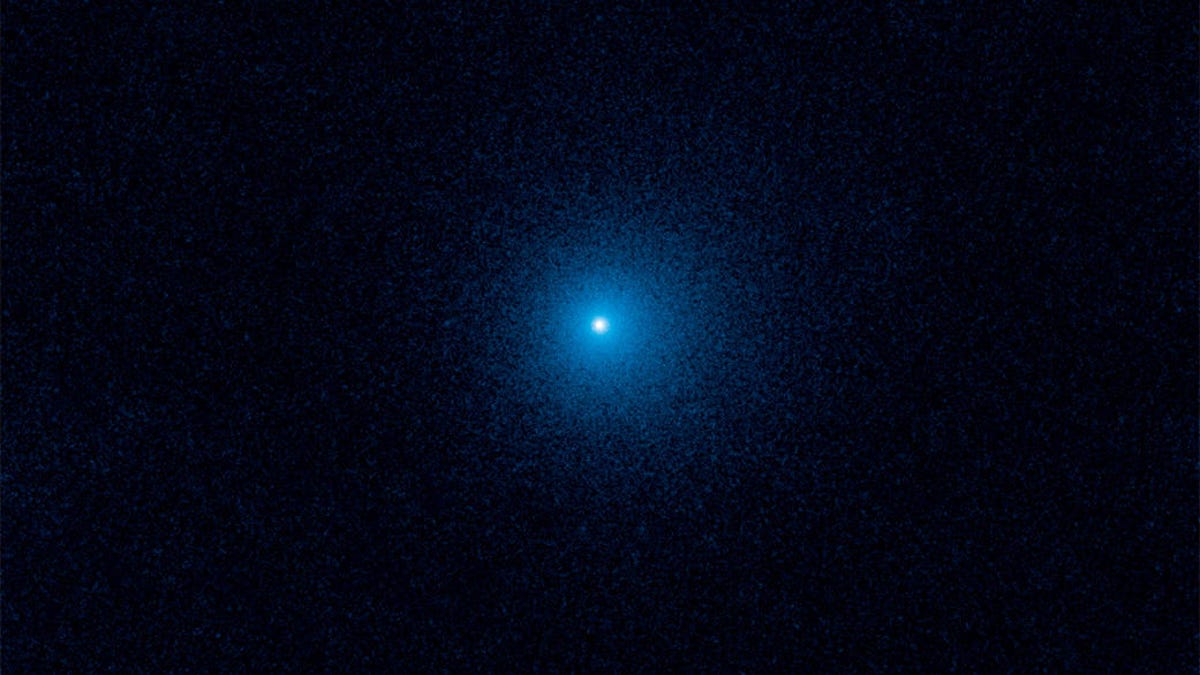Hubble sees comet spew dust cloud from crazy far away
A frigid comet moves through the solar system and makes a spectacle of itself in an impressive Hubble Space Telescope image.
Comet C/2017 K2 PANSTARRS is a wonder. It entered the planetary zone of our solar system and is spewing out what NASA describes as an 80,000-mile-wide (130,000-kilometer-wide) fuzzy cloud of dust, known in astronomy circles as a "coma." The Hubble Space Telescope snapped the comet's portrait in June when it was at the incredible distance of 1.5 billion miles (about 2.4 billion kilometers) past the sun, and NASA shared the image Thursday.
The comet's nickname is simply "K2." Hubble's imaging achievement is notable, but the comet itself is absolutely fascinating. "These observations represent the earliest signs of activity ever seen from a comet entering the solar system's planetary zone for the first time," NASA noted in a statement.
K2 likely originates from a distant, comet-heavy and very icy area of the galaxy called the Oort Cloud. The comet's scenic coma isn't due to water ice evaporating, like it is with most comets. Comet researcher David Jewitt of the University of California Los Angeles says the dusty cloud is probably formed from frozen oxygen, nitrogen, carbon dioxide and carbon monoxide turning from solids into gasses as sunlight reaches the space object.
"That's why it's special. This comet is so far away and so incredibly cold that water ice there is frozen like a rock," says Jewitt, likening the comet's coma to the shedding of an outer skin.
The Panoramic Survey Telescope and Rapid Response System (Pan-Starrs) in Hawaii first spotted the comet in May. Hubble's view of the comet helped determine the size of its nucleus, which Jewitt estimates to be less than 12 miles (19 kilometers) across.
K2 will continue to be an object of study. It won't reach its closest approach to the sun until 2022, giving astronomers plenty of time to keep an eye on its activities.


